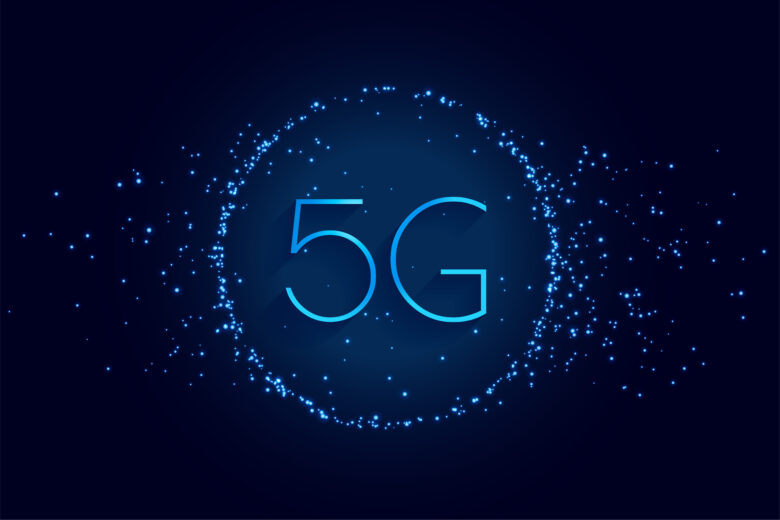Billions of connected devices are flooding the market that require speed, low latency, and wide bandwidth—5G infrastructure is necessary to support them all. 5G technology provides highly reliable, almost instantaneous communication for applications like remote asset control or driverless car services while improving efficiency through improved asset management.
1. Unprecedented Speed and Low Latency
5G will revolutionize how we interact with technology. Its ultrahigh speeds and significantly reduced latency will allow for an immersive augmented and virtual reality experience, opening up opportunities to new entertainment applications (OPENSIGNAL 2023). Furthermore, 5G allows IoT devices like connected or self-driving cars to transmit real-time data transmission in order to instantly interact and respond to each other, revolutionizing communication within these vehicles themselves and with each other as a result.
5G achieves its incredible level of performance through advanced New Radio (NR) technology that transfers data over millimeter waves. This creates hyper-efficient highways for data, decreasing latency and battery usage on devices.
2. Revolutionary Infrastructure
New, power-hungry functions are creating an explosion of data and demand on device batteries, placing strain on their power supplies and drains (Tentzeris 2019). 5G millimeter-range technology offers one solution by tapping energy from signals generated from these functions by turning them into electricity, thereby reducing battery drain (Tentzeris 2019).
Business applications can take advantage of 5G’s massive upgrade in data speed and network performance, including its 90% reduction in networking energy usage, 10-fold longer sensor battery life, and near instantaneous communication for IoT services like remote operations or driverless cars. Furthermore, 5G supports edge computing and network slicing to enable AI-powered automation within cloud infrastructure that moves us closer towards fully autonomous intent-based networks with minimal human interaction.
3. Transformative Industry Applications
5G will eventually connect a variety of objects to the Internet—everything from your smartphone to your car and even dog collars! This “Internet of Things” concept promises new applications across entertainment, medicine, and manufacturing. 5G boosts speed by tapping into wider spectrums of the radio-wave spectrum than what modern mobile networks rely on, using higher frequencies that enable networks to take on tasks normally handled by your phone, improving performance while saving battery power.
Automation technology is already helping manufacturers streamline production, enable robots to collaborate on factory floors, and optimize supply chains, while simultaneously facilitating communication among self-driving cars—helping ease traffic and make roads safer for everyone.
4. Consumer Benefits
5G allows consumers to experience better streaming of 4K video and immersive AR/VR experiences and is making business processes faster and more reliable for industrial automation and fleet management telematics applications. 5G offers low latency and high bandwidth that enable IoT devices to communicate in near real-time, potentially helping reduce production line downtime and improving hospital efficiency. This could save manufacturers both time and money.
5G’s network management features, such as network slicing, allow operators to tailor wireless connections for various use cases on an as-a-service basis, making 5G an attractive option for rural Internet providers that compete against fiber options.
5. Edge Computing
5G was designed with more than just phones in mind; its capabilities extend well beyond mobile phone use, including ultra-reliable low-latency communication and edge computing. Together these technologies create a comprehensive solution for applications requiring real-time processing or data to be processed locally.
Surgeons could use remote surgery technology with instantaneous response times; retail stores could integrate online data and algorithms into physical stores to enhance customer experiences and reduce thefts. Asset efficiency applications may also benefit from this technology. Wind turbines, for instance, could be configured automatically to optimize performance, leading to more energy production with reduced environmental impacts.
6. More Than a Mobile Network
With lightning-fast download and upload speeds, 5G offers more than just internet connectivity; it serves as an essential infrastructure that links every possible device—from everyday wearables to delivery drones.
With peak data rates up to 20 20Gbps and ultra-low latency of 1 millisecond, 5G can enable machine-to-machine communication that will lead to more efficient transportation, remote healthcare delivery, digitized logistics, automated manufacturing, and more. In addition, edge computing brings network capabilities closer to devices, allowing 5G to remove processing-intensive tasks from users’ phones and improve performance while saving battery power—edge computing is responsible.
7. Smart Homes
5G provides fully integrated smart home systems that utilize one network protocol to deliver an enjoyable user experience, from lighting control and climate management to curating personalized playlists curated by artificial intelligence-enhanced devices connected via 5G that instantly adapt to individual preferences.
With lower latency and a 90% reduction in network energy usage, IoT devices powered by 5G should have extended battery life—perfect for streaming movies without buffering or gaming without any lag while on the move! In addition, these IoT devices can also help optimize home operations and enhance security.
8. Smart Cities
5G technology represents an enormous improvement on earlier technology generations in terms of speed and latency. Capable of supporting one million devices per square kilometer with low latency of less than one millisecond, 5G delivers seamless device connectivity that is reliable.
Cities may use 5G technology to network HD video cameras for monitoring traffic and public safety purposes, as well as optimizing port and terminal infrastructure through remote control of equipment. Smart city applications rely on 5G’s ability to provide reliable, high-speed data transmission. 5G also facilitates various other efficiencies, including telemedicine and remote healthcare access, waste management, and environmental monitoring.
9. Smart Healthcare
5G offers ultrafast connectivity that’s essential to the Internet of Things, with low latency enabling connected devices to communicate in real-time without lag or signal loss.
Smart hospitals are using 5G technology to revolutionize RPM and telemedicine, allowing healthcare professionals to remotely monitor patients through a central monitoring system. This remote monitoring empowers healthcare workers to save resources while improving patient outcomes by minimizing in-person visits. Smart hospitals rely on 5G network slicing to facilitate these critical applications, providing a virtual network with precisely the capabilities required. This facilitates rapid and seamless connections across their hospital campus.




